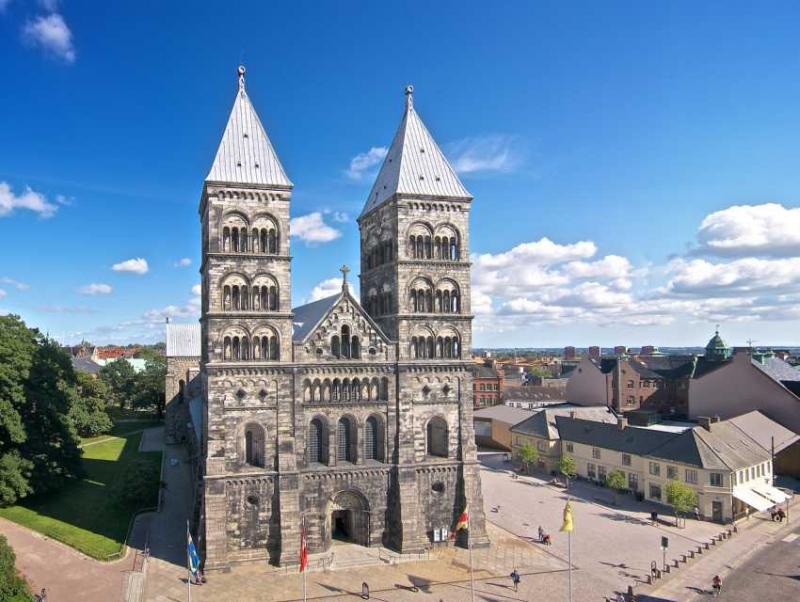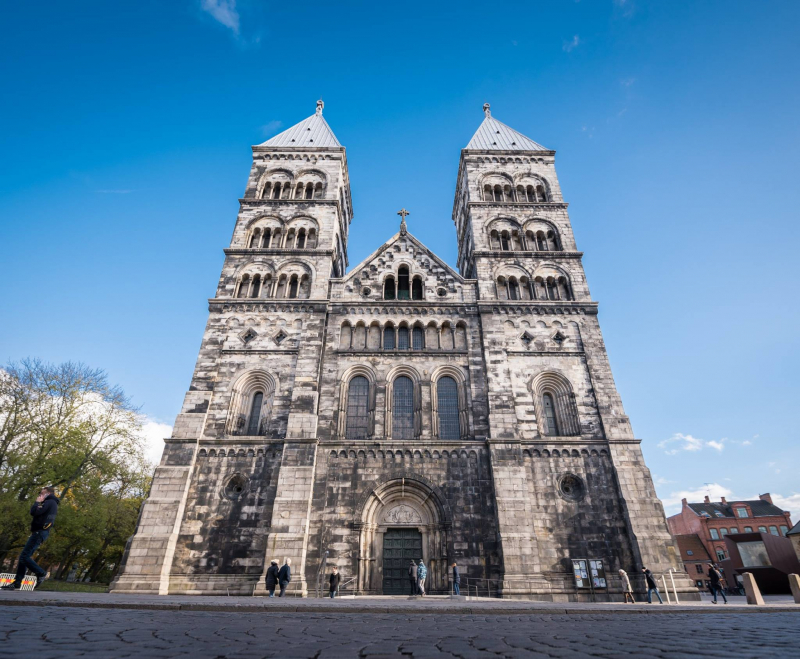Lund Cathedral

Lund Cathedral is a Lutheran Church of Sweden cathedral in Lund, Scania, Sweden. It is the Bishop of Lund's seat and the major church in the Diocese of Lund. It was consecrated to Saint Lawrence as the Catholic cathedral of the archiepiscopal see of all Nordic nations. It is one of Sweden's oldest stone structures still in use.
Lund Cathedral has been termed "the most powerful representation of Romanesque architecture in the Nordic nations". Lund and the cathedral belonged to Denmark at the time of their construction. The main altar was consecrated in 1145, and the cathedral was nearly finished at the time; the western towers were added later. Its architecture is clearly influenced by current north Italian architecture, which was transmitted via the Rhine Valley. The first architect was called Donatus, however his specific participation in the cathedral's construction is unknown.
Several ancient furniture and items of art may be found in the medieval cathedral. Its major altarpiece was presented to the cathedral in 1398, and it also has Gothic choir stalls, bronzes, and a 15th-century astronomical clock (although heavily restored in 1923). Lund Cathedral was beautifully embellished with Romanesque stone sculptures when it was erected. It also has late medieval stone carvings from Adam van Düren's rebuilding period. The cathedral also had a beautiful pulpit after the Reformation. The enormous mosaic in the apse by Joakim Skovgaard, inaugurated in 1927, is more modern. Lund Cathedral, which also serves as a performance venue, includes six church organs, one of which is the biggest in Sweden.
Location: Kyrkogatan 6, Lund, Sweden











